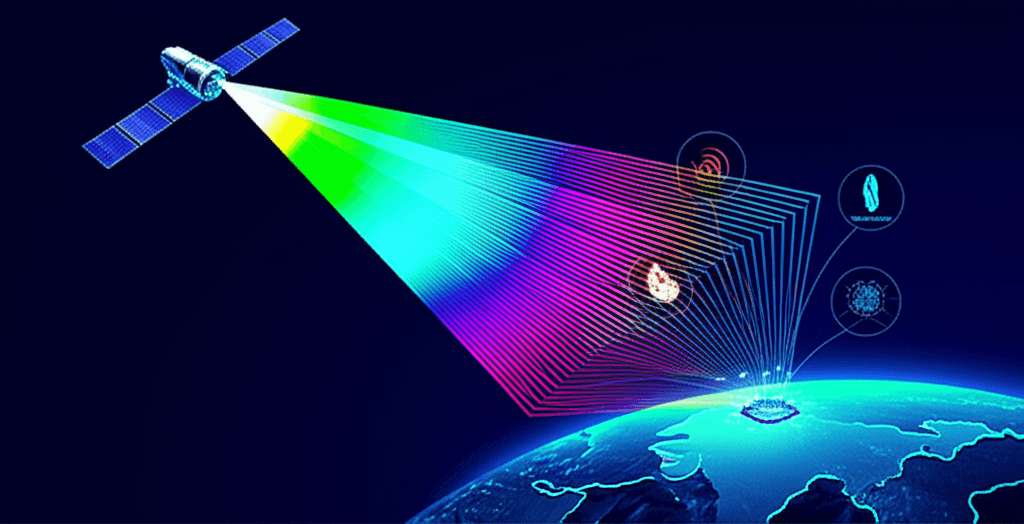Suhora Launches India's First Commercial High-Resolution Hyperspectral Satellite Services
India's first commercial hyperspectral satellite service unlocks powerful AI-driven insights for defense, environment, and resources.
July 8, 2025

A strategic partnership between Noida-based Suhora Technologies and U.S.-based Orbital Sidekick (OSK) is set to introduce high-resolution hyperspectral satellite services to India for the first time.[1][2][3] This collaboration marks a significant advancement for India's earth observation and geospatial analytics capabilities, making Suhora the first Indian company to commercially offer operational hyperspectral data across a wide spectrum.[2][3] The deal will see OSK's advanced hyperspectral imagery integrated into Suhora's flagship SPADE platform, a subscription-based Software-as-a-Service (SaaS) solution that already provides access to multi-sensor satellite data.[3] This integration will empower users with unprecedented capabilities for detailed material detection and classification, with wide-ranging implications for sectors like defense, environmental monitoring, and mineral exploration.[2][4]
Hyperspectral imaging, a sophisticated analytical technique, captures data from across the electromagnetic spectrum, far beyond the capabilities of the human eye or standard optical cameras. Unlike traditional imaging, which typically captures three bands of light (red, green, and blue), hyperspectral sensors can capture hundreds of contiguous spectral bands.[5][6] This wealth of data allows for the creation of a unique "spectral fingerprint" for any given material, enabling precise identification and analysis.[7] For instance, it can distinguish between different types of vegetation, identify specific minerals on the earth's surface, or detect chemical compositions in the atmosphere.[7][8] This technology has been utilized in various fields globally, including precision agriculture for monitoring crop health, environmental science for tracking pollution and deforestation, and in the medical field for analyzing tissue composition.[7][8] The immense amount of data generated by these systems, however, requires sophisticated AI-driven analytics to process and interpret, a challenge that Suhora aims to address through its platform.[7]
The technological backbone of this new service is Orbital Sidekick's GHOSt (Global Hyperspectral Observation Satellite) constellation.[1] This constellation currently consists of five hyperspectral satellites, with plans to expand.[1][2] These satellites are equipped with proprietary imagers that can capture up to 472 contiguous spectral bands with a high spatial resolution of 8.3 meters.[1][2] This offers a significant commercial advantage over existing public sources of hyperspectral data, such as Germany's EnMAP, Italy's PRISMA, and NASA's EMIT, due to its higher resolution and more frequent revisit times.[2] The GHOSt constellation provides global monitoring capabilities, capturing detailed information across the visible to shortwave infrared (VSWIR) region of the spectrum.[9] This persistent monitoring is crucial for applications that require timely data, such as detecting methane leaks from pipelines or monitoring for other environmental anomalies.[6]
The introduction of commercial hyperspectral services is poised to create significant value across various Indian sectors. In the realm of national security and defense, the technology can provide strategic intelligence through detailed monitoring and anomaly detection.[1] For the energy sector, it offers a powerful tool for monitoring pipelines and detecting leaks of methane, a potent greenhouse gas, thereby supporting environmental sustainability efforts.[2][6] Furthermore, the agricultural sector can benefit from precise monitoring of crop health, soil conditions, and resource management.[7][10] A key application highlighted by the partnership is in geological and mineralogical exploration, including the mapping of rare earth elements, which are critical for many modern technologies.[2][3] The ability to conduct such precise and remote analysis can significantly de-risk and accelerate exploration efforts.
For the artificial intelligence industry in India, this partnership represents a significant catalyst. The massive datasets generated by the GHOSt constellation will necessitate the development and application of advanced AI and machine learning algorithms for analysis.[11] Suhora's SPADE platform, which already leverages AI-driven analytics, will become a crucial tool for transforming this raw satellite data into actionable insights.[3][11] This creates a fertile ground for Indian data scientists and AI professionals to develop new models and applications tailored to the specific needs of Indian industries. The collaboration aligns with India's national vision for space advancement and empowers decision-makers with sophisticated tools to address complex challenges in security, disaster response, and environmental management.[2] As the adoption of satellite data analytics grows, the demand for high-quality hyperspectral imagery and the AI-powered tools to interpret it is expected to accelerate, positioning India at the forefront of this technological revolution.[3]